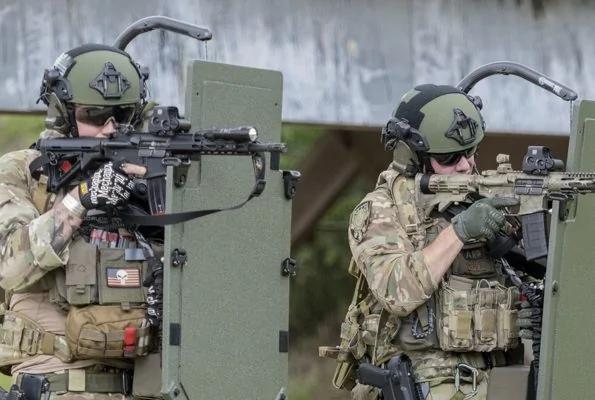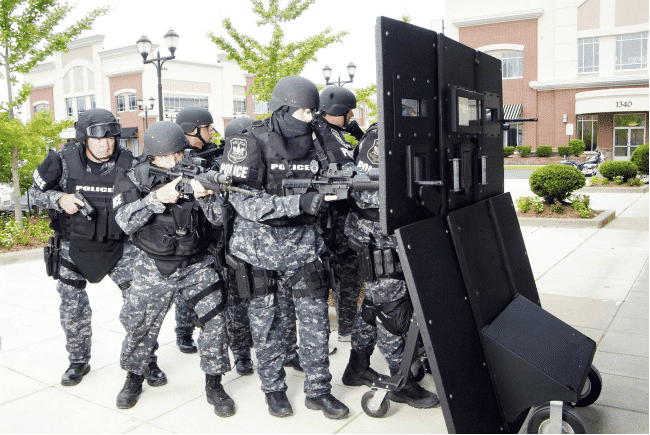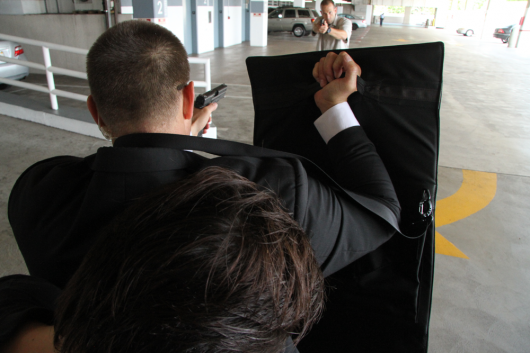As the name suggests, bulletproof shields are shields with certain bulletproof capabilities. Traditional bulletproof shields are rectangular, sheet-shaped objects with arcs, and usually have handles behind them that are easy to hold. While resisting the attack of the enemy, it is only necessary to lift the shield and put it in front of the user to cover the head and body, thus providing the user with comprehensive protection. However, with the continuous progress of the protection industry, various protection products are also changing with each passing day, and the functions, appearance, and design of use are also constantly improving. They are more and more suitable for various use scenarios and in line with human usage habits.
There are many materials that can be used to make bulletproof shields, including Kevlar, polyethylene, ceramics and steel plates.
Bulletproof shields are generally classified by size, which can be divided into ultra small (450mm×650mm), small (550mm×650mm), medium (550mm×1000mm), large (600mm×1300mm) and super large (600mm×1750mm). Bullet-proof shields also have strict protection standards. The National Institute of Justice has set 7 standards for bullet-proof shields—Class I, Class IIA, Class II, Class IIIA, Class III, Class IV, and Special level. Class I can protect 0.22 inch pistol and 0.38 inch special pistol; Class IIA can protect 0.357 inch Magnum and 9mm pistol (lower velocity type, such as 0.380 inch ACP bullet); Class II can protect 0.357 inch horse Gnum and 9mm pistols (types with higher initial velocity, such as 9mm Barabelum); Class IIIA can protect against 0.44 inches of Magnum and 9mm submachine guns; Class III can protect against 0.308 inches of Winchester Specially fully armored and 7.62×39mm bullets; Class IV can protect 0.30-06 inch bullets, 7.62mm NATO standard bullets and 7.62×54mmR bullets; special grades are customized for special bullets. SWAT has many opportunities to use bulletproof shields. However, since the SWATs mostly use medium-sized bulletproof shields, tactical lights are sometimes added. Basically, they are mainly Class IIIA, and Class III will also be used when necessary, but the total quality of the two is very different.
From the perspective of appearance and design, it can be divided into ordinary handheld bulletproof shield, folding bulletproof shield, briefcase bulletproof shield, ladder-type bulletproof shield, cart-type bulletproof shield.
1.Handheld shield
Hand-held shields are usually equipped with two handles on the back, which can be used by left-handed or right-handed users at the same time, and they are also equipped with bullet-proof glass observation windows or speculums to facilitate the observation of external conditions. Hand-held shields are mainly suitable for combat scenarios with more complex terrain. For example, hand-held bullet-proof shields are more flexible to use in narrow stairs or passages, and can be better matched with weapons such as guns.

2.Cart-style bulletproof shield
The cart-type bulletproof shield is equipped with a cart, which is more labor-saving for long-distance movement, and like the handheld bulletproof shield, it is equipped with a handle on the back and can be used by hand. It is also equipped with bulletproof glass speculum. Both are large, and the cart needs to be replaced during continuous use.

3.Briefcase bulletproof shield
A briefcase-type bulletproof shield is a bulletproof shield that looks like a briefcase. The shape on weekdays is a very ordinary public relations bag, but it can quickly be developed into a bulletproof shield at a critical juncture. The weight of this shield is only about 5 kilograms, which has a good defensive effect on the protection of light weapons such as pistols.

 English
English German
German French
French Russian
Russian Spanish
Spanish Japanese
Japanese Korean
Korean Portuguese
Portuguese Ukrainian
Ukrainian Arabic
Arabic Italian
Italian Afrikaans
Afrikaans Albanian
Albanian Armenian
Armenian Azerbaijani
Azerbaijani Basque
Basque Belarusian
Belarusian Bulgarian
Bulgarian Catalan
Catalan Croatian
Croatian Czech
Czech Danish
Danish Dutch
Dutch Estonian
Estonian Filipino
Filipino Finnish
Finnish Galician
Galician Georgian
Georgian Greek
Greek Haitian Creole
Haitian Creole Hebrew
Hebrew Hindi
Hindi Hungarian
Hungarian Icelandic
Icelandic Indonesian
Indonesian Irish
Irish Latvian
Latvian Lithuanian
Lithuanian Macedonian
Macedonian Malay
Malay Maltese
Maltese Norwegian
Norwegian Persian
Persian Polish
Polish Romanian
Romanian Serbian
Serbian Slovak
Slovak Slovenian
Slovenian Swahili
Swahili Swedish
Swedish Thai
Thai Turkish
Turkish Urdu
Urdu Vietnamese
Vietnamese Welsh
Welsh Yiddish
Yiddish




